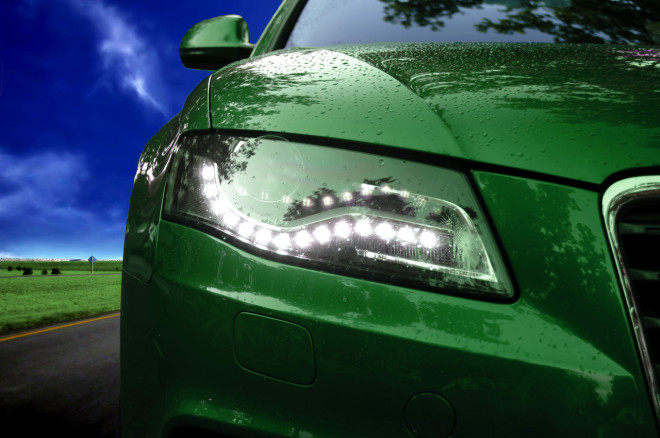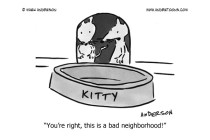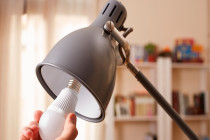We’ve talked about green driving tips before, but here is a bit of interesting information for all you car buffs: Up until 2003, mercury switches were a standard feature in many vehicles and appliances. These tiny devices worked by using a small amount of mercury to open and close an electrical circuit. In older cars, they were used in antilock braking systems and to trigger convenience lighting, helping drivers see when they opened the door or popped the trunk.
This topic caught our eye because as you know, lighting advances are our thing. And like us, the automotive industry has developed a fondness for versatile LED technology.
LED brake lights first hit the streets in 1993 and nearly a decade later, LED headlights were introduced. Today, LEDs can be found in front, behind and underneath our cars (think neon underglow for your tricked out ride) as well as inside, brightening up the instrument panel and the vehicle’s interior.
The bulbs offer many advantages over traditional lights. Since they aren’t limited by size, they can be arranged various ways, providing both decorative and functional benefits. And because they don’t incorporate a delicate filament, LEDs are more resistant to road vibration and shock.
LED headlights truly do outshine their competition. They are much brighter than their incandescent and halogen predecessors and achieve maximum illumination in a fraction of the time. Just like the LEDs in your home, these bulbs have a much longer lifecycle than earlier variations, meaning fewer trips to the service garage. LEDs are also a clear winner when it comes to safety. These bulbs will stay cool to the touch and when used in brake and indicator lights, studies show that the reaction time of other drivers can improve by around 30%.
One of the reasons we are on board with this trend is that LEDs are also mercury free and that is good news for our planet.
In the last decade, as more has been discovered about mercury toxicity and the potential for negative environmental and human health impacts, these switches have been phased out. But there are still vintage products around that must be dealt with responsibly if we want to protect our soil, water systems and of course food chain from this hazardous element.
Switch Out: Get Your Old Car Properly Recycled
Seven years ago, a national program called “Switch Out” was initiated. Funded and supported by Canada’s steel and automotive industry, Switch Out facilitates the removal, collection and management of mercury-containing switches in end of life vehicles. So far, more than half a million switches have been recovered across Canada. In their own words:
Switch Out is a national program designed to remove, collect and manage mercury-containing convenience lighting switches and anti-lock braking system (ABS) sensor modules in end-of-life vehicles before they are flattened, shredded and recycled into new steel.”
This is great news. It means when it is time to say goodbye to your classic car and truck you can feel good knowing that the resulting scrap is mercury free. And if you are having a little trouble letting go, just remember that your newer model vehicle will offer many more features that are better for the environment including our favourite, LED lights.
About The Author

-
Serial Entrepreneur, Technologist and Inventor.
My objective is to develop useful products that have a net positive effect in the lives of those that use them and the environment that we live in.
CEO of Mission LED Lighting Company Ltd.
- 2017.05.24LED factsWhy Are Cars Switching to LEDs if They’re Too Bright?
- 2017.05.09Be green & saveHow to Easily Replace T8 Fluorescent Tubes With LED
- 2017.03.07Build a better future7 Things About Explosion Proof LED Lighting You Should Know
- 2017.02.28Be green & saveWhy We Love LED Grow Lights (And You Should, Too!)





Leave a Reply